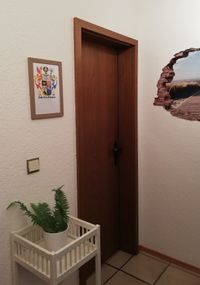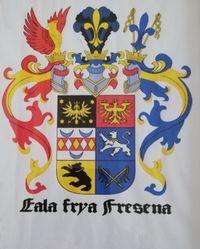The Story of Freedom
I have always viewed these stories, which my grandma brought me closer to, as a kind of fairy tale and I am amazed at how many historical facts can be found in them. The following knowledge, which I have briefly summarized here, comes from my research and the people who have dealt with this history more intensively. Since this time, many centuries back, is also a piece of my roots of my ancestry, I fall back on this foreign knowledge.
The Frisian tribe lives at the Dutch and German North Sea coast. Their language was the "Old Frisian" which is considered the forerunner of the modern Frisian language. The existence of Frisian tribes was already documented in early antiquity, that is, as early as 800 BC.
The people at the sea lived from peat mining, salt extraction and fishing. They braided their nets from reeds and bulrushes because the barren land had hardly any vegetation.They had their own faith, which was deeply rooted in nature, and so the Frisians also resisted missionary work. King Radbod in particular, who ruled the Great Frisian Empire, fought against submission and Christianization. Only after his death in 729 AD the Franken(Name for a German part of the country) defeated the great pagan state, the "Magna Frisia".They banned the pagan customs and killed those who did not want to be baptized in the Christian faith.They destroyed the small forests with their sanctuaries called sacred groves. Here they worshiped their gods under the protection of their sacred trees. The new churches of a foreign religion were built on their sacrificial sites.The conquerors formed the new buildings from the wood of the sacred trees and erected them in the sacred places of their ancestors. Revenge attacks by the Frisians against the churches and monasteries began, and so Christianity could never completely replace the old belief that was at home in the Germanic religion.
Severe storm surges made life on the coast difficult and resulted in countless deaths in humans and animals. One of the floods stands out from the historical records. The 2nd Marcellus flood, named after the former bishop of Rome, broke into the country with great violence. The devastating flood lasted three days and went down in history as "the great drowning". Not only it took away valuable land, it killed over 100,000 people.The subsequent plague epidemic, popularly known as black death, brought further suffering. It decimated the population again at the end of the 14th century. It is for me understandable that, at that time, people viewed it as a kind of "wrath of God" and associated it with the deluge.Famines and the loss of social order were the consequences of which the "chief-familys" being in East Friesland ultimately developed. In the search for normality and protection, they placed their hope in the hands of the great landowners and farmers.After the time of the Vikings, East Frisia was able to expand its independence. While feudal rule reigned in the rest of the country, the first foundations of democracy were found here.
The emissaries of the individual clans, the Redjeven, met once a year to dispense law together. They always met on Tuesday in the Whitsun week at the "Upstalsboom". Today the burial mound is a memorial and commemorates the former place of assembly. The oral tradition of Frisian freedom was confirmed in 1493 by Emperor Sigismund and recognized as legally binding in a document. It is located in the Dutch Institute for Frisian History and Literature in Leeuwarden.
Today the Eyla frya Fresena hangs in my hallway.
To live in freedom is still our greatest asset and I don't just refer to the Frisians!

